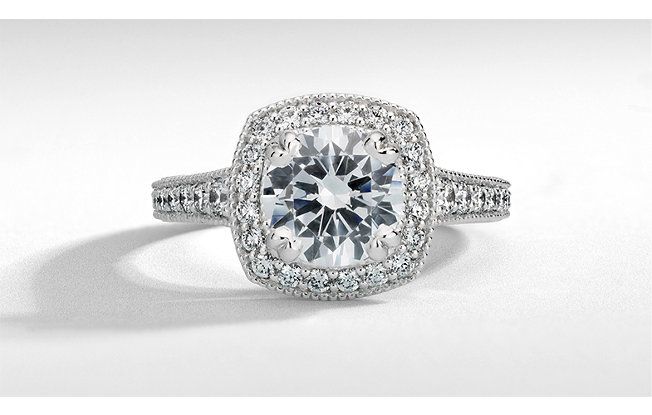In recent years, lab grown diamonds have emerged as a compelling alternative in the world of engagement rings. These diamonds, cultivated in controlled environments rather than mined from the earth, offer a range of benefits that appeal to modern consumers. This article explores the advantages of lab grown engagement rings, the process of creating these diamonds, their quality compared to natural diamonds, market trends, and more.
Table of Contents
Benefits of Lab Grown Engagement Rings
One of the primary draws of lab grown engagement rings is their environmental sustainability. Unlike mined diamonds, which require extensive mining processes that can damage ecosystems, lab grown diamonds have a significantly lower environmental impact. They are produced using sustainable practices and reduce the demand for mining, making them a more eco-friendly choice for environmentally conscious consumers.
Additionally, lab grown diamonds are celebrated for their ethical considerations. Traditional diamond mining has been associated with issues such as labor exploitation and human rights violations in certain regions. Lab grown diamonds, on the other hand, are produced in controlled laboratory settings where labor conditions can be closely monitored and regulated, ensuring ethical sourcing practices.
From a financial standpoint, lab grown engagement rings also offer cost-effectiveness compared to natural diamonds. The process of creating lab grown diamonds is less resource-intensive and more efficient, leading to lower production costs. This cost savings is often passed on to consumers, making lab grown diamonds a more affordable option for those looking to purchase high-quality engagement rings without the premium price tag associated with natural diamonds.
How Lab Grown Diamonds are Created
Lab grown diamonds are created using advanced technological processes that mimic the natural conditions under which diamonds form in the earth’s mantle. High pressure and high temperature (HPHT) and chemical vapor deposition (CVD) are the two primary methods used to grow diamonds in a laboratory setting.
In the HPHT method, a small diamond seed is placed in a high pressure, high temperature environment where carbon atoms are deposited onto the seed, causing it to grow layer by layer into a larger diamond crystal. This process replicates the natural diamond formation process but accelerates it under controlled conditions.
On the other hand, CVD involves placing a diamond seed in a chamber filled with carbon-rich gases. These gases are ionized into plasma using microwaves or other energy sources, causing carbon atoms to bond and form a diamond crystal on the seed over time. This method allows for more precise control over the diamond’s growth and purity.
Quality and Characteristics
Lab grown diamonds exhibit the same physical and chemical properties as natural diamonds, including hardness, brilliance, and fire. They are graded using the same standards for clarity, color, cut, and carat weight as natural diamonds. In fact, lab grown diamonds can achieve exceptional levels of clarity and color purity due to the controlled conditions in which they are grown.
Durability is another key characteristic of lab grown diamonds. They are structurally identical to natural diamonds and are capable of withstanding the rigors of everyday wear. Whether set in platinum, gold, or another precious metal, lab grown diamonds retain their beauty and sparkle over time, making them a practical choice for engagement rings.
Popular Brands Offering Lab Grown Engagement Rings
Several reputable jewelry brands have embraced lab grown diamonds and offer a wide range of engagement ring styles to cater to diverse tastes and preferences. Companies like Brilliant Earth, MiaDonna, and James Allen are known for their commitment to sustainability and ethical sourcing practices, offering consumers the opportunity to choose beautiful engagement rings that align with their values.
These brands emphasize transparency in their manufacturing processes and provide customers with detailed information about the origin and characteristics of their lab grown diamonds. Many also offer customization options, allowing couples to create unique and personalized engagement rings that symbolize their love and commitment.
Consumer Confidence and Certification
As lab grown diamonds continue to gain popularity, consumer confidence in these stones has grown thanks in part to recognized certifications. Independent gemological laboratories such as the Gemological Institute of America (GIA) and the International Gemological Institute (IGI) provide grading reports that certify the authenticity and quality of lab grown diamonds.
These certifications assure consumers that they are purchasing genuine lab grown diamonds with accurate assessments of their characteristics. They also contribute to the overall trustworthiness of lab grown diamonds in the marketplace, providing peace of mind to buyers who value transparency and reliability in their purchasing decisions.
Customization Options
One of the standout features of lab grown engagement rings is their versatility and customization options. Unlike natural diamonds, which are limited by availability and size, lab grown diamonds can be produced in a wide range of shapes, sizes, and colors to suit individual preferences.
Many jewelry retailers offer online tools that allow customers to design their own engagement rings by selecting the diamond shape, setting style, and metal type. This level of customization enables couples to create a one-of-a-kind piece that reflects their unique style and relationship, making the experience of choosing an engagement ring both personal and memorable.
Market Trends and Demand
The market for lab grown diamonds has experienced significant growth in recent years as more consumers become aware of their benefits and advantages over mined diamonds. According to industry reports, sales of lab grown diamonds have surged as millennials and Gen Z consumers prioritize sustainability and ethical considerations in their purchasing decisions.
This demographic shift has prompted traditional jewelry retailers to expand their offerings of lab grown diamonds and cater to the evolving preferences of younger generations. As a result, lab grown diamonds have become increasingly mainstream and accessible, with a growing number of consumers opting for these diamonds as a symbol of their commitment and values.
Comparing Lab Grown vs. Natural Diamonds
While lab grown diamonds share many similarities with natural diamonds in terms of physical properties and appearance, there are some key differences to consider. Natural diamonds are formed over millions of years deep within the earth’s crust, resulting in unique characteristics and imperfections known as inclusions.
In contrast, lab grown diamonds are created in a matter of weeks or months under controlled conditions, which can result in diamonds that are virtually flawless and free from natural inclusions. This controlled environment also allows for greater consistency in terms of color and clarity, making lab grown diamonds an attractive option for consumers seeking precision and uniformity in their engagement rings.
Sustainability Practices in the Jewelry Industry
The rise of lab grown diamonds has contributed to a broader shift towards sustainability within the jewelry industry. By reducing the demand for mined diamonds, lab grown diamonds help mitigate the environmental impact associated with traditional mining practices, including land disruption, water usage, and carbon emissions.
Many jewelry brands that specialize in lab grown diamonds prioritize sustainable sourcing and manufacturing practices. They work closely with suppliers who adhere to strict environmental standards and support initiatives aimed at promoting responsible mining and resource conservation. As a result, consumers can feel confident that their purchase of a lab grown engagement ring supports sustainable practices and contributes to positive social and environmental outcomes.
Myths and Misconceptions
Despite their growing popularity, man made diamonds are sometimes met with misconceptions and misunderstandings. One common myth is that lab grown diamonds are “fake” or inferior to natural diamonds. In reality, lab grown diamonds are chemically and optically identical to natural diamonds, differing only in their origin.
Another misconception is that lab grown diamonds lack value or sentimentality compared to natural diamonds. In truth, the value of a diamond lies in its beauty and emotional significance to the wearer, regardless of whether it was formed naturally or grown in a laboratory. Many couples appreciate the ethical and environmental benefits of lab grown diamonds and view them as a meaningful choice for their engagement rings.
Long-term Maintenance and Care
Like natural diamonds, lab grown diamonds require regular care and maintenance to preserve their brilliance and sparkle. Routine cleaning with a soft brush and mild detergent can help remove dirt and oils that accumulate over time. It’s also important to store lab grown engagement rings separately from other jewelry to prevent scratching and damage.
For more extensive cleaning and maintenance, professional jewelers offer services such as ultrasonic cleaning and steam cleaning, which safely remove stubborn residues and restore the diamond’s luster. Regular inspections by a jeweler can also ensure that the setting is secure and the diamond is in optimal condition for years to come.
Emotional and Symbolic Value
Beyond their physical attributes, lab grown engagement rings hold significant emotional and symbolic value for couples embarking on the journey of marriage. The act of selecting an engagement ring is deeply personal, representing love, commitment, and the promise of a future together.
Lab grown diamonds offer couples the opportunity to choose a ring that aligns with their values and beliefs, whether it’s sustainability, ethical sourcing, or simply a preference for a high-quality diamond at a more affordable price point. The sentimental meaning of an engagement ring transcends its monetary value, making it a cherished symbol of love and partnership for generations to come.
Customer Reviews and Testimonials
Real-life experiences and testimonials from customers who have chosen lab grown engagement rings offer valuable insights into the quality, craftsmanship, and overall satisfaction with their purchase. Many customers praise the beauty and brilliance of lab grown diamonds, noting their indistinguishable appearance from natural diamonds and the peace of mind that comes with choosing an ethical and sustainable option.
Positive reviews often highlight the exceptional customer service provided by jewelry brands specializing in lab grown diamonds, from personalized consultations to seamless online shopping experiences. These testimonials serve as reassurance for prospective buyers considering a lab grown engagement ring and underscore the growing popularity and acceptance of lab grown diamonds within the jewelry market.
Conclusion
In conclusion, lab grown engagement rings represent a modern and sustainable choice for couples seeking beautiful and ethically sourced diamonds. With their environmental benefits, ethical considerations, and affordability compared to natural diamonds, lab grown diamonds have reshaped the landscape of the jewelry industry.

